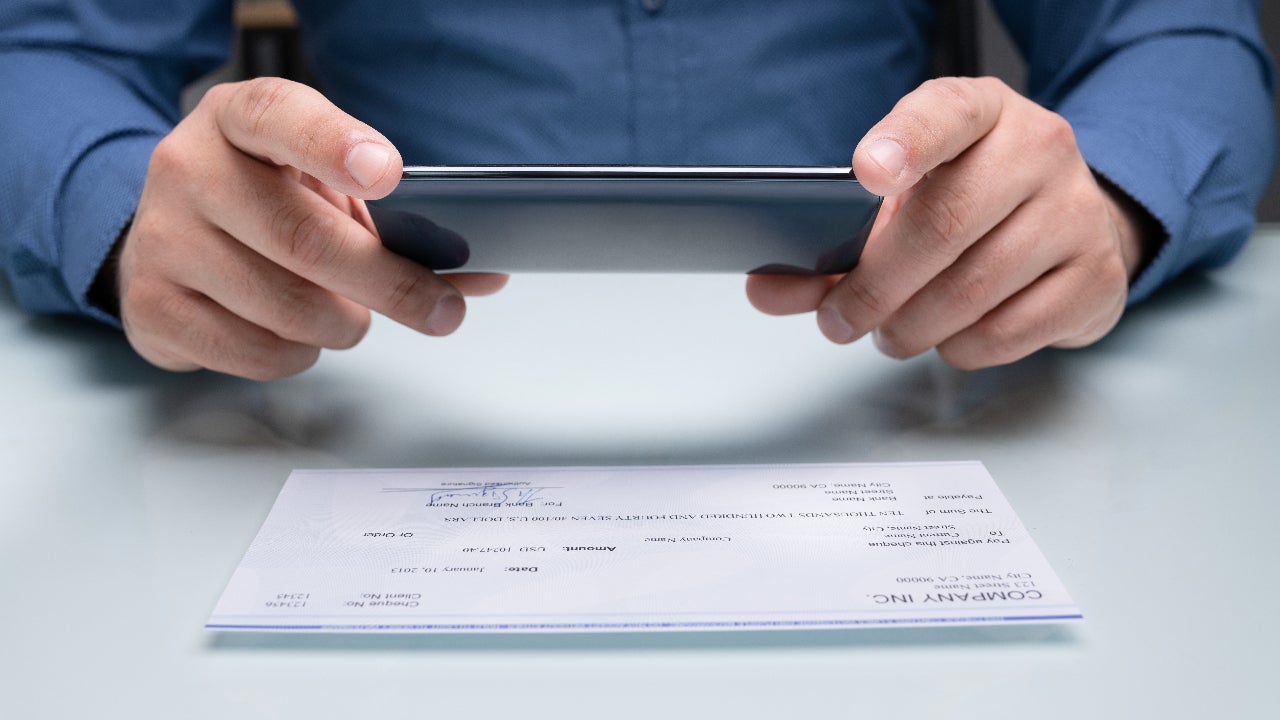8 important mobile banking alerts to set up today

Low balance. Large purchase. Unusual activity.
If you don’t already get bank account alerts such as these, it might be a good time to set them up to help monitor your finances. Most consumers already use a mobile banking app – 81 percent use it at least monthly, according to the American Bankers Association.
Mobile bank alerts, which help customers stay aware of their finances and watch for suspicious activity, are one of the advantages unique to online banking. These eight alerts serve several different purposes and can help you bank better.
What is the purpose of setting up alerts in a mobile banking app?
Setting up notifications in your bank’s mobile app offers several benefits. These alerts help you spot unauthorized access to your account or debit card immediately, prevent costly fees from overdrafts or low balances, and track your spending in real time. By monitoring your balance and transactions automatically, mobile alerts make it easier to stay on top of your finances.
Learn more: How to choose the best online bank
Types of online banking alerts
Mobile banking alerts are often highly customizable and encourage smart financial management. Most banks offer at least some alerts through their apps, which can be turned on or off as needed.
“Today’s mobile banking alerts provide an array of options to help consumers keep their bank accounts in good standing, avoid unnecessary fees and protect themselves from fraud,” says Paul McAdam, senior director of regional banking at J.D. Power.
Here are eight to consider switching on.
1. Low balance alert
Low balance alerts let you know when your bank account balance drops to a predetermined amount, which could be $20, $500 or another selected amount. Depending on the bank, these alerts can come in the form of an email, text message or push notification — or all three.
A low balance alert could be helpful for consumers nervous about racking up overdraft fees or those who want to keep tabs on how much money is in their accounts without having to sign in to an app or website.
Overdraft fees are one of the biggest charges you can incur on an account —$27.08 in 2024, up from $26.61 in 2023, according to Bankrate’s 2024 Checking Account and ATM Fee Survey. By getting alerted when your account’s balance is running low, you can avoid overdrawing the account and getting hit with this fee, while also making better spending decisions.
2. Direct deposit alert
Direct deposit alerts can let you know when your paycheck hits your checking account, which can help in scheduling bill payments and budgeting. If you use automatic bill pay services, direct deposit alerts let you know when your funds are available for automatic withdrawals.
Many banks also offer similar alerts, such as when a deposited check clears your account.
Read more: Bankrate’s picks for best checking accounts
3. Unusual account activity alert
Another alert to consider setting up is one that notifies consumers when there’s a change in their account status that’s unusual. For example, a large amount of money transferred out of the account all at once could be concerning if that’s something that rarely happens. Large, stand-alone transactions are a red flag for fraudulent activity.
By signing up for an unusual account activity alert, you’ll immediately be made aware of any suspicious activity associated with checking, savings or money market accounts. Staying aware of account activity is important, particularly if there’s an incident of fraud.
The sooner you report fraudulent activity, the greater your chances of getting reimbursed due to a stolen debit card or an account number ending up in the wrong hands.
“Customers who use mobile banking alerts are slightly more likely to detect and contact their bank regarding fraud or unauthorized account activity — providing a greater sense of protection,” says McAdam.
4. Large purchase alert
Depending on the bank, there may be an option to set alerts for when a large amount of money is spent at one time. Mobile app users may be able to specify a threshold for what they consider a concerningly large purchase. If you usually don’t spend more than $100 on any purchase in a given day, for example, you could set an alert for any transactions that are over $100.
The alert can help ensure the purchase doesn’t go unnoticed, and speed up the process of investigation and reimbursement if the purchase was unauthorized.
5. Large ATM withdrawal alert
Besides setting up a large purchase alert, consider opting for an alert when a big cash withdrawal takes place. That way, you’ll know instantly if money is taken from your account by someone else.
Additionally, some banking apps may send alerts specifically when an account has exceeded the daily withdrawal limit. Withdrawals that exceed the limit could be a sign that someone else has access to your account. Otherwise, the alert will signal that you might be withdrawing too much cash at one time.
6. Debit card alert
Debit card alerts can also be helpful for tracking purchases. The bank may be able to send notifications whenever any purchase is made with one or more of your debit cards.
Alternatively, a debit card alert can be used to notify you when a transaction is declined or made in an uncustomary location, like another country. This feature used in conjunction with card locks makes it possible to quickly shut off access to your debit card to intercept fraud.
For those who are victims of bank fraud, it’s also worth checking your credit report for any unusual activity to ensure someone hasn’t opened a credit card in your name.
7. Profile change alert
When it comes to digital banking, there’s a risk that personal data may be threatened by data breaches or scams. There are a number of ways to protect yourself from cyberattacks, such as changing account passwords and downloading identity theft-protection software.
One easy way to stay on top of potential threats to your accounts — including password or username changes — is to opt for a profile change alert. This alert notifies you of any updated personal details and account suspensions as well, which can help detect suspicious activity and blocking accounts or debit cards before they’re used illegally.
Learn more: How to protect your bank accounts from fraud.
8. Upcoming payment alert
Setting an upcoming payment alert could be useful for any payments you have that are scheduled or recurring. That might include things like recurring bills, loan payments or subscriptions.
Not only will this alert make you aware of money that’s about to be withdrawn from your account, it can also keep you in the loop for any recurring payments and subscriptions that you might have forgotten to cancel — or that you never signed up for in the first place. Perhaps you switched gyms but never canceled the old gym membership; an upcoming payment alert can serve as a reminder to cancel that recurring payment to the old gym.
Be aware of bank alert scams
It’s possible that some bank alerts might not be what they claim. Sometimes scammers may send an email or text message claiming to be from the bank. The scammers may send a fake bank alert through text or email (known respectively as phishing and smishing) requesting information from the account holder to authorize a transaction or fix a problem with the account, but really, they’re attempting to get your personal information for illegal use.
The Federal Trade Commission (FTC) warns that if a scam message asks for personal information, the scammer can gain access to your email accounts, bank accounts, credit cards and more. Some things to look out for in an alert that might signal a scam are:
- Requests that require giving out personal information, like Social Security or bank account numbers.
- The alert asks you to log into your account from a provided link.
- You’re asked to contact a phone number that appears to be your bank’s number. It may be someone posing as a bank representative.
What to do if you receive a suspicious alert
According to the FTC, you should never give out any personal information through email or text messages. If an alert asks for account information or asks you to do something through the message, such as clicking on a link, that may be a sign that the alert is fraudulent. A real financial institution won’t ask for personal information by text or email.
If the alert seems real, but you’re unsure, call or reach out to the bank through a contact listed on the bank’s website, rather than a contact provided by the alert. If the message turns out to be a scam, report it to the FTC at reportfraud.ftc.gov. It’s also usually possible to report messages through the messaging app or email server with a report spam or junk option.
How to set up banking alerts
Setting up banking alerts through your mobile banking app or online portal will vary by bank, but is typically a straightforward process that can be completed in just a few simple steps:
- Login and navigate to settings: The settings or preferences section of the app is typically represented by a gear or cog icon and can usually be found in the menu or toolbar.
- Select alert preferences: Within the settings menu, locate the section that specifies alerts or notifications, with a label such as “Alert Preferences.”
- Customize settings: Depending on the bank, you’ll typically have a range of alert types to choose from. Select which alerts you wish to receive, and customize the settings to suit your preferences, such as by setting thresholds for balance notifications and specifying specific delivery methods (e.g. push notifications, SMS, etc.).
- Save your preferences: Take a moment to review your customizations, then confirm your selections to activate your alerts.
If you have trouble, you can always contact your bank’s customer service for assistance, using the number on the back of your debit card or on the bank’s official website.
Boosting your banking satisfaction
Once you know to look out for scam alerts, bank account alerts are highly useful. Alerts help consumers stay aware of their spending habits and account activity, so that they can rest assured knowing they won’t miss any suspicious transactions or potential overdrafts.
Plus, mobile alerts can boost satisfaction with your bank overall. Recent data from J.D. Power confirms that digitally engaging customers with features like alerts has a significant positive effect on customer satisfaction.
Consumers report that relevant account alerts are one of the best ways that banks can deliver a personalized level of service, McAdam says.
For more information on how to protect your bank accounts, check out Bankrate’s guide to online banking security.
Why we ask for feedback Your feedback helps us improve our content and services. It takes less than a minute to complete.
Your responses are anonymous and will only be used for improving our website.






